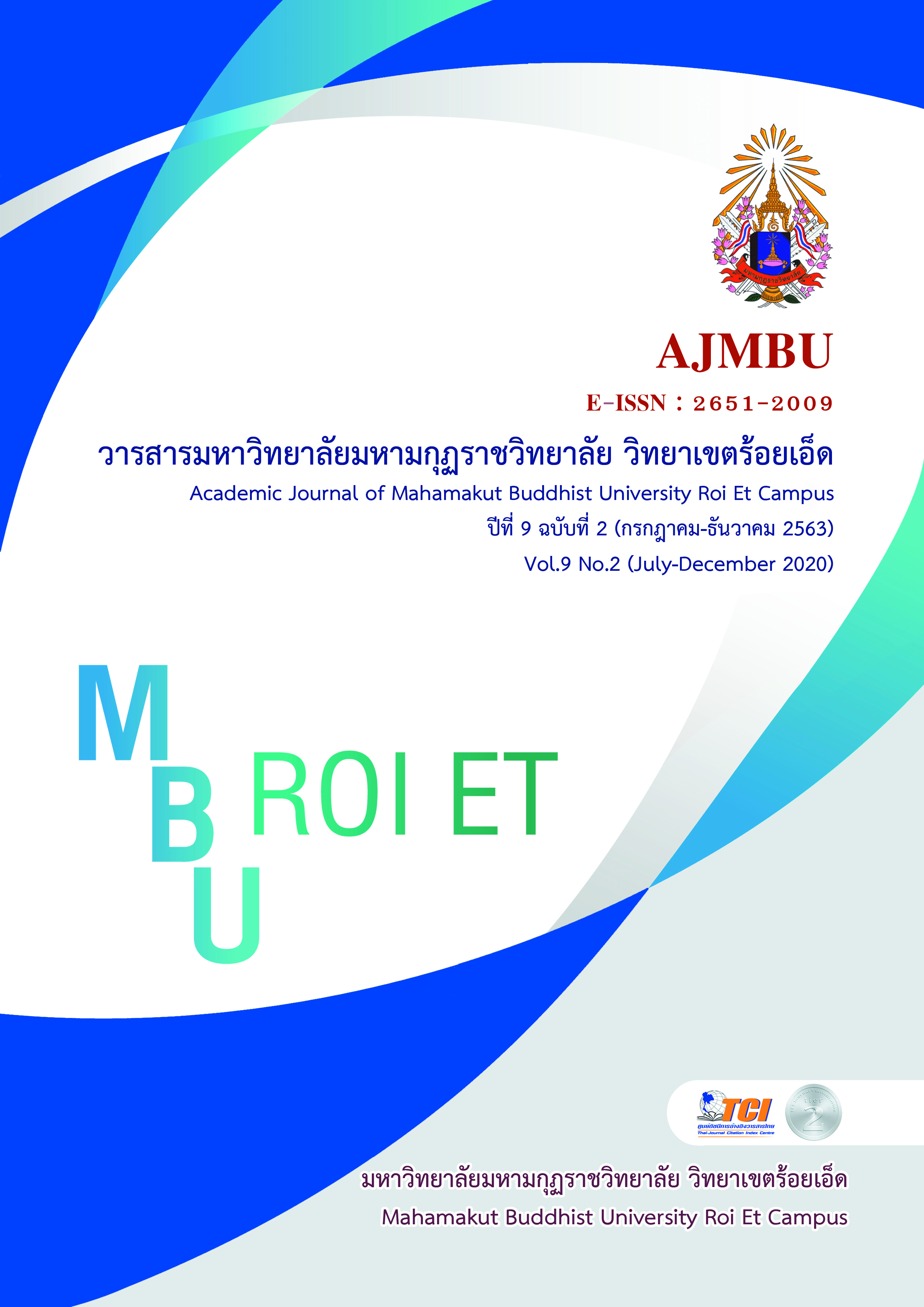The Overlapping Dimension of Faith in Buddhism
Main Article Content
Abstract
The objectives of the research article were on the creation of visual art works titled “The Overlapping Dimensions of Faith in Buddhism” was aimed at investigating the faith in Buddhism that holds the mind of the Thai people. Faith in Buddhism has been embedded into the mind through belief and faith in the form of idols, rituals, and traditions that have been passed on until now. In addition, this thesis was intended to create art prints expressed through the symbolic shapes of Buddha images and flowers designed as symbols from the studied content. In this study, we used materials and methods of printing openings, silk screens, transparent and opaque screening colors, and acrylic paints, which pass through the silk screens representing the overlapping dimensions of faith. Field data were collected from elements in traditional rituals, including Buddha images, flowers, and various patterns photographed as raw information for creation. In addition, other data were gathered from documents explaining the dimensions of belief as foundation of the Buddhist places of worship from the past to the present generating the joy, faith, and inspiration. This study was influenced by the art works of some artists. According to Asst. Prof. Surasit Saokong, an atmosphere of peace was created from the shapes that relate to belief and faith in Buddhism. Phongsiri Khiddee used colors that reflect the Thai identity and fineness in a symbolic form of culture through the process of printing openings and using silk screens. Also, Samat Suwannaphong created a harmonious relationship between colors and decorative patterns of Thai architecture through works. After that, data analysis was conducted to find clarity of the subject. Symbolic shapes were then created by using visual elements of the points and lines, including vibration of colors that affects the eyes as well as weighing and alternation of color pairs, such as hot, cool, and opposite colors, resulting in a surface from the thickness of these overlapping colors. In this thesis, eleven
visual art works were uniquely created in the form of art prints using silk screens based on visual principles to meet the concept. In conclusion, we created the overlapping dimensions describing the belief and faith in Buddhism expressed through the shapes of idols by using the silk screens and the principle of color overlapping to generate color dimensions, weights, and tones. Vibration of colors shows a feeling of faith power that is consistent with the creator’s idea or intent. These creations led to new and unique discoveries.
Article Details
References
พงศ์ศิริ คิดดี. (2553). การสร้างสรรค์ศิลปะ. สืบค้นเมื่อ 8 เมษายน 2562. จาก www.thaiartmart.com
พิสิฏฐ์ บุญไชย. (2549). การวิจัยทางวัฒนธรรม. มหาสารคาม : สถาบันวิจัยศิลปะและวัฒนธรรมอีสาน.
สำนักงานราชบัณฑิตยสถาน. (2536). ศรัทธา. จดหมายข่าวราชบัณฑิตยสถาน. 3(28). สืบค้นเมื่อ 8 เมษายน 2562. จาก http://www.royin.go.th/?knowledges=ศรัทธา
สมรรถ สุวรรณพงษ์. (2553). การสร้างสรรค์ศิลปะ. สืบค้นเมื่อ 8 เมษายน 2562 จาก www.thaiartmart.com
ศรีศักดิ์ วัลลิโภดม. (2560). พุทธศาสนา และความเชื่อในสังคมไทย. กรุงเทพมหานคร : พิมพ์ลักษณ์.
สำนักงานคณะกรรมการวัฒนธรรมแห่งชาติ. (2532). สู่โฉมหน้าใหม่ของวัฒนธรรมกับการพัฒนา. กรุงเทพมหานคร : อมรินทร์พริ้นติ้งกรุ๊พ.
สุรสิทธิ์ เสาว์คง. (2553). การสร้างสรรค์ศิลปะ. สืบค้นเมื่อ 8 เมษายน 2562. จาก www.thaiartmart.com


